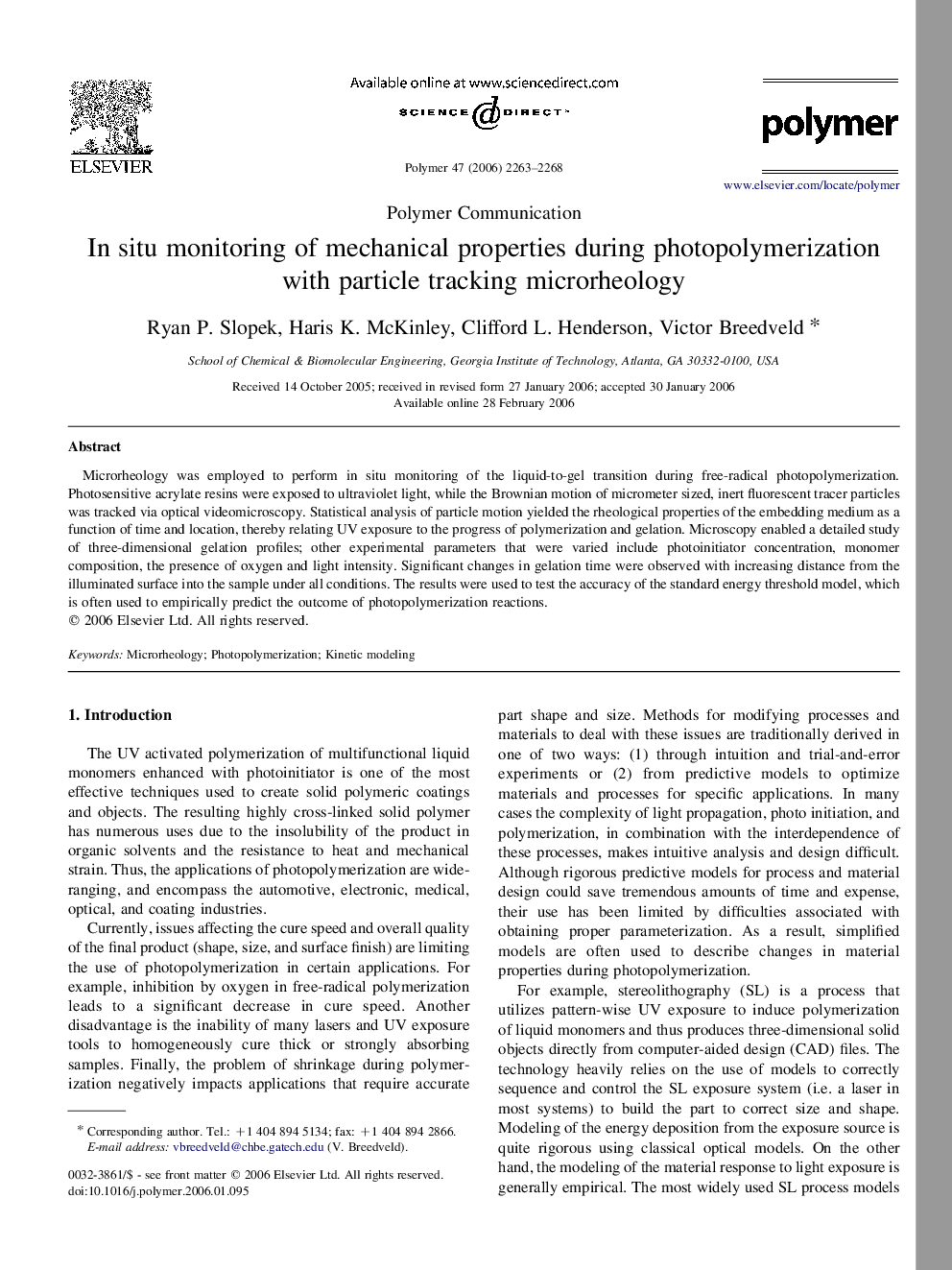| Article ID | Journal | Published Year | Pages | File Type |
|---|---|---|---|---|
| 5190972 | Polymer | 2006 | 6 Pages |
Abstract
Microrheology was employed to perform in situ monitoring of the liquid-to-gel transition during free-radical photopolymerization. Photosensitive acrylate resins were exposed to ultraviolet light, while the Brownian motion of micrometer sized, inert fluorescent tracer particles was tracked via optical videomicroscopy. Statistical analysis of particle motion yielded the rheological properties of the embedding medium as a function of time and location, thereby relating UV exposure to the progress of polymerization and gelation. Microscopy enabled a detailed study of three-dimensional gelation profiles; other experimental parameters that were varied include photoinitiator concentration, monomer composition, the presence of oxygen and light intensity. Significant changes in gelation time were observed with increasing distance from the illuminated surface into the sample under all conditions. The results were used to test the accuracy of the standard energy threshold model, which is often used to empirically predict the outcome of photopolymerization reactions.
Related Topics
Physical Sciences and Engineering
Chemistry
Organic Chemistry
Authors
Ryan P. Slopek, Haris K. McKinley, Clifford L. Henderson, Victor Breedveld,
